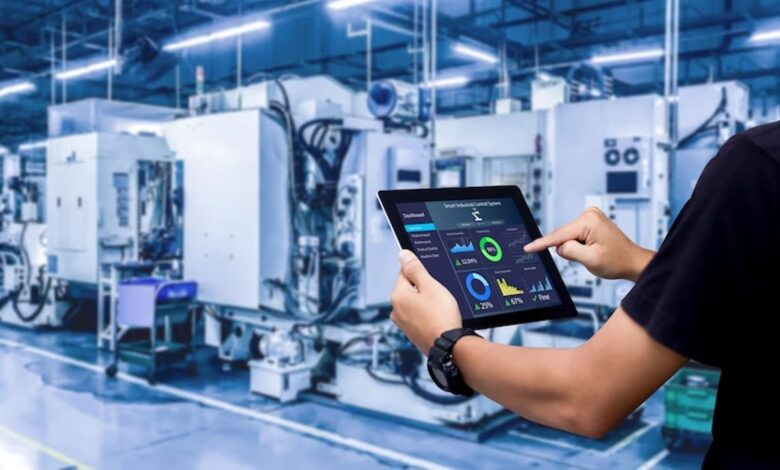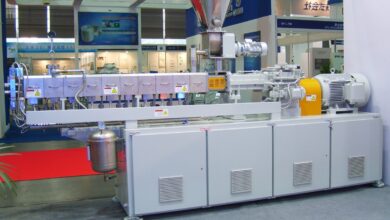Machine Condition Monitoring Tools and Technologies in 2023

Machine condition monitoring has evolved significantly over the years. In 2023, it stands at the forefront of ensuring the smooth operation of industrial machinery. This article will explore the latest advancements in machine condition monitoring, its importance, tools, and technologies, as well as its impact on various industries.
Machine condition monitoring is the practice of regularly assessing the health of machines to predict and prevent failures. This proactive approach has gained immense significance in industries where machinery downtime can result in substantial losses.
Importance of Machine Condition Monitoring
In the industrial sector, machinery is the backbone of operations. Whether in manufacturing, energy production, or transportation, machinery is relied upon for seamless functioning. Any unexpected downtime or failure can result in significant financial losses, decreased productivity, and even safety hazards. This is where machine condition monitoring steps in as a proactive solution.
- Preventing Catastrophic Failures: Machine condition monitoring allows for the early detection of anomalies and irregularities in machinery. It acts as an early warning system, identifying potential issues before they escalate into major problems. By addressing these issues in their infancy, companies can prevent catastrophic failures, which can result in costly downtime and repairs.
- Reducing Downtime: Downtime is a significant concern for industries. It not only leads to financial losses but can also damage a company’s reputation. Machine condition monitoring provides the advantage of predictive maintenance, enabling maintenance teams to schedule repairs during planned downtime rather than in the midst of critical operations.
- Cost Savings: One of the most significant advantages of machine condition monitoring is cost savings. By addressing problems before they become severe, companies can significantly reduce maintenance costs. They can also extend the lifespan of machinery, as timely maintenance prevents wear and tear from reaching critical levels.
- Operational Efficiency: Proactive maintenance through machine condition monitoring ensures operational efficiency. When machines are consistently operating at their best, the overall productivity of the company is optimized, leading to higher profitability.
- Enhanced Safety: In industries where machinery is involved, safety is of paramount importance. Unexpected machinery failures can lead to accidents and injuries. Machine condition monitoring helps in ensuring the safety of both equipment and personnel by reducing the likelihood of sudden failures.
- Data-Driven Decision Making: With the advent of IoT and advanced data analytics, machine condition monitoring provides valuable data for decision-making. It offers insights into the performance of machinery, helping companies make informed choices about maintenance schedules, equipment upgrades, and resource allocation.
In summary, machine condition monitoring is a proactive approach to machinery maintenance that has a profound impact on the industrial landscape. It goes beyond the traditional reactive methods of maintenance and provides a cost-effective and efficient way to ensure the smooth operation of machinery, prevent unexpected failures, and enhance overall operational efficiency. As industries evolve and become more reliant on machinery, the importance of machine condition monitoring cannot be overstated. It is a critical component for maintaining competitiveness and success in today’s industrial world.
Read More: The Future of the Automotive Industry
Traditional Methods vs. Modern Technologies
Historically, maintenance relied on periodic inspections. Today, modern technologies have revolutionized the field. Let’s explore these advancements.
Vibration Analysis
Vibration analysis is a common technique used to detect imbalance, misalignment, or wear in machinery. It involves monitoring vibrations to identify irregularities.
Infrared Thermography
Infrared thermography uses thermal imaging to identify temperature variations. Hotspots may indicate potential issues.
Ultrasound Testing
Ultrasound testing detects high-frequency sounds emitted by machines. Anomalies in these sounds can signify problems.
Oil Analysis
Analyzing oil samples can reveal contamination, wear particles, and lubrication issues, providing valuable insights into a machine’s condition.
IoT and Machine Condition Monitoring
The Internet of Things (IoT) plays a pivotal role. Sensors and devices connected through IoT provide real-time data, enhancing monitoring and predictive capabilities.
Benefits of Real-time Monitoring
Real-time monitoring enables immediate responses to anomalies, reducing downtime and improving operational efficiency.
Predictive Maintenance and Cost Savings
Predictive maintenance, driven by machine condition monitoring, saves companies money by preventing catastrophic failures and reducing maintenance costs.
The Future of Machine Condition Monitoring
Machine condition monitoring has come a long way in recent years, and the future promises even more exciting developments. In this section, we will explore what lies ahead for machine condition monitoring and how emerging technologies will further enhance its capabilities.
Automation and IoT Integration
One of the most significant trends in the future of machine condition monitoring is automation. The integration of sensors and devices through the Internet of Things (IoT) will continue to play a pivotal role. These interconnected devices provide real-time data on the condition of machinery, creating an environment where machines essentially monitor themselves. Here’s what to expect:
- Continuous Data Flow: IoT-enabled sensors will continuously collect and transmit data from various machinery. This real-time data flow will enable immediate responses to any anomalies, allowing for timely maintenance.
- Predictive Analytics: Advanced analytics and machine learning algorithms will analyze the data from IoT sensors. This will not only detect irregularities but also predict when a machine is likely to require maintenance, taking predictive maintenance to a whole new level.
- Remote Monitoring: With IoT, machine condition monitoring can be conducted remotely, allowing experts to monitor and diagnose issues without being physically present at the site. This capability is particularly beneficial for geographically dispersed industries.
- Reduced Human Intervention: The automation of monitoring processes will reduce the need for human intervention. Machines will be capable of diagnosing themselves and triggering maintenance requests independently.
AI Integration
Artificial Intelligence (AI) is another game-changer for the future of machine condition monitoring. Machine learning algorithms will become more sophisticated, providing invaluable insights and improving predictive capabilities:
- Advanced Anomaly Detection: AI-powered algorithms can identify subtle anomalies in machinery performance that might be missed by traditional monitoring methods.
- Pattern Recognition: AI can recognize patterns in data that indicate potential issues. It can correlate data across various sensors and identify trends that may lead to failures.
- Proactive Decision-Making: With AI, the decision-making process becomes more proactive. Machines will not only identify issues but also recommend the most suitable actions for maintenance.
Integration with Maintenance Systems
Machine condition monitoring will become more tightly integrated with overall maintenance systems:
- Seamless Workflow: Data from condition monitoring will seamlessly integrate into maintenance workflows, streamlining the process from issue detection to resolution.
- Resource Allocation: Maintenance teams will have a clearer understanding of where resources are needed, allowing for efficient resource allocation and planning.
Improved Data Visualization
Data visualization tools will become more advanced, making it easier for operators and maintenance teams to understand the information provided by condition monitoring systems:
- Interactive Dashboards: Interactive dashboards will provide real-time insights and allow for customized views of machinery performance.
- Predictive Alerts: Visualization tools will not only display current data but also provide predictive alerts based on AI analysis.
Sustainability and Environmental Considerations
As environmental consciousness grows, machine condition monitoring will also focus on sustainability:
- Energy Efficiency: Monitoring systems will incorporate energy efficiency analysis, helping industries reduce their carbon footprint.
- Reduced Waste: Predictive maintenance will reduce the need for unnecessary replacements, contributing to sustainability by minimizing waste.
Challenges and Limitations
Despite its advantages, machine condition monitoring faces challenges such as implementation costs, data management, and the need for skilled personnel.
Read More: The Future of Technology: What to Expect in the Next 10 Years
Conclusion
Machine condition monitoring stands as an indispensable practice in the industrial landscape, ensuring the seamless operation of machinery and offering a multitude of benefits. This article has highlighted the importance of machine condition monitoring, emphasizing its role in preventing catastrophic failures, reducing downtime, and resulting in significant cost savings.
The future of machine condition monitoring promises automation, artificial intelligence integration, and enhanced predictive capabilities, where machines will essentially monitor themselves, identify issues before they become severe, and reduce the need for human intervention. The synergy between IoT and advanced analytics will revolutionize the way industries approach maintenance, making it more proactive and efficient.
As industries evolve and become more reliant on machinery, the importance of machine condition monitoring cannot be overstated. It goes beyond just ensuring machinery runs smoothly; it is a strategic tool that can enhance operational efficiency, improve safety, and contribute to sustainability.
FAQs
FAQ 1: What is the primary purpose of machine condition monitoring?
Machine condition monitoring’s primary purpose is to assess the health of industrial machines and predict potential failures, allowing proactive maintenance.
FAQ 2: How does IoT impact machine condition monitoring?
IoT enhances machine condition monitoring by providing real-time data from sensors, enabling immediate responses to anomalies.
FAQ 3: Can machine condition monitoring prevent unexpected breakdowns?
Yes, machine condition monitoring can prevent unexpected breakdowns by identifying issues early and enabling timely maintenance.
FAQ 4: What industries benefit most from these technologies?
Industries such as manufacturing, energy, and transportation benefit significantly from machine condition monitoring.
FAQ 5: What are the common challenges in implementing these tools?
Common challenges include high implementation costs, data management, and the need for skilled personnel to operate and interpret the data.











